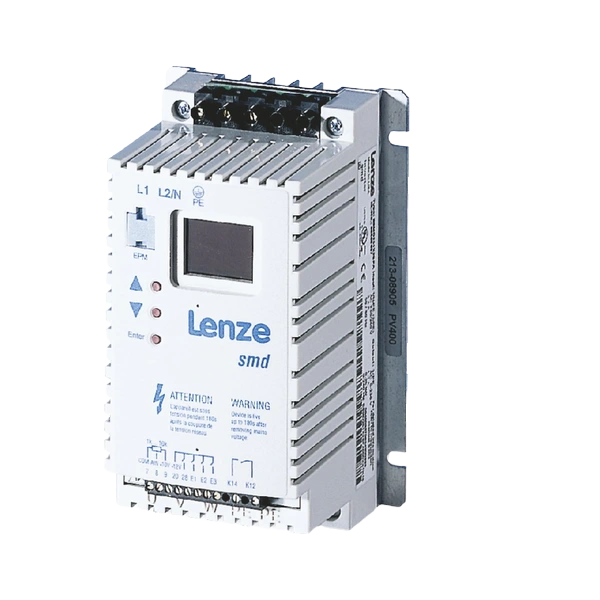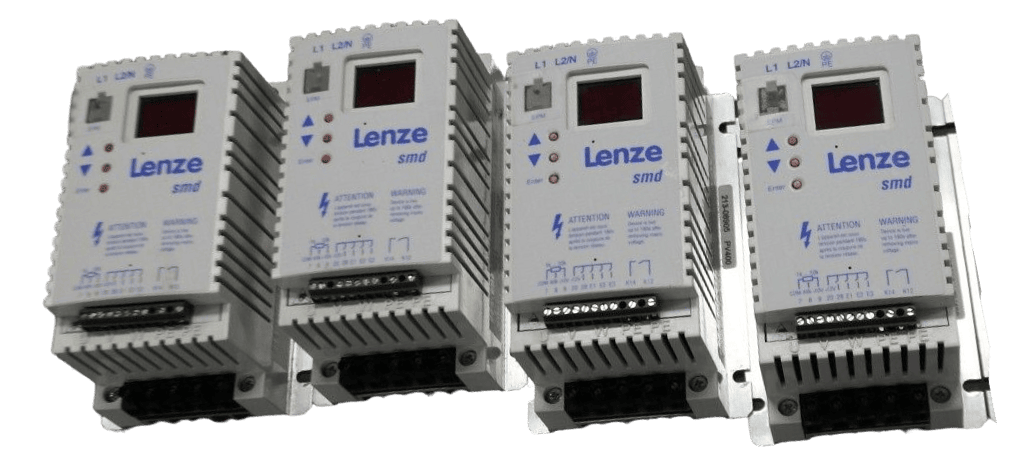lenze smd drive fault codes
02.08.2024
Lenze SMD drives are critical components that provide precise motor control, enhancing the efficiency and reliability of various industrial processes. However, even the most reliable equipment can encounter issues, often indicated by specific fault codes.
By familiarizing yourself with fault codes, you can ensure that your Lenze SMD drives operate smoothly, safeguarding your industrial operations against unexpected disruptions. This article delves into the intricacies of lenze smd fault codes, offering a detailed guide on their meanings, causes, and solutions.
What are Lenze SMD Drives?

Lenze SMD drives, also known as frequency inverters, are crucial components in the realm of industrial automation. These devices are designed to regulate the speed and torque of electric motors, enabling precise control over various industrial processes. The acronym "SMD" stands for "Simple Motor Drive," reflecting the drive's user-friendly nature and straightforward operation.
Functionality and Applications Lenze SMD Drive
The Lenze SMD drive is a versatile frequency inverter designed for a wide range of industrial applications. Known for its reliability, efficiency, and user-friendly interface, the SMD series has established itself as a preferred choice for many industries.
Functionality of Lenze SMD Drive
The SMD drive offers a comprehensive set of features to control and regulate AC motors precisely. Key functionalities include:
- V/f Control: The drive employs voltage-to-frequency control (V/f) for efficient motor operation across various load conditions.
- Fault History Buffer: This feature records detailed information about faults, aiding in troubleshooting and preventive maintenance.
- DC Brake Function: The integrated DC brake function provides quick and reliable motor stopping.
- S-Ramps: Smooth acceleration and deceleration are ensured through S-ramp profiles.
- Fixed Frequencies: Preset fixed frequencies can be programmed for specific applications.
- Flexible I/O: Customizable input and output configurations adapt to diverse control requirements.
- Motor Thermal Overload Protection: Built-in protection safeguards the motor from overheating.
- Current Limit: The drive can handle up to 180% of rated current with frequency foldback for stable operation.
- Quiet Operation: Adjustable carrier frequency up to 10 kHz minimizes audible noise.
- Electronic Programming Module (EPM): This innovative feature stores drive configuration and motor parameters, simplifying setup and maintenance.
Applications of Lenze SMD Drive
The versatility of the Lenze SMD drive makes it suitable for a wide range of industries and applications:
- Pump and Fan Applications: The SMD excels in controlling pumps and fans, optimizing energy efficiency and performance.
- Conveyor Systems: Precise speed control and smooth acceleration/deceleration are essential for conveyor systems, where the SMD delivers reliable performance.
- Material Handling: In material handling applications, the SMD's robust design and overload protection make it a suitable choice.
- Textile Industry: The SMD's ability to handle varying loads and speeds is beneficial in textile machinery.
- Packaging Industry: Accurate speed control and precise positioning are crucial in packaging, where the SMD offers reliable solutions.
- General Machinery: The SMD's versatility makes it suitable for a wide range of general machinery applications.
Typical Lenze smd fault codes
Lenze SMD drives are robust and reliable, but like any industrial equipment, they can experience issues. When a fault occurs, the drive will typically display an error code to indicate the problem. This table provides a comprehensive list of common fault codes encountered in Lenze SMD drives, along with their potential causes and suggested troubleshooting steps.
Overview of commonly encountered error messages.
| Fault Code | Description | Potential Causes | Troubleshooting |
| E01 | Overcurrent/Overload | - Excessive motor load | - Verify motor load |
| E02 | Motor Overheat | - Excessive motor load | - Reduce motor load |
| E03 | Communication Error | - Faulty communication cables | - Check communication cables |
| E04 | Drive Over temperature | - Overloading the drive | - Reduce drive load |
| E05 | Undercurrent | - Open circuit in motor or power supply | - Check motor and power supply connections |
| E06 | Motor Overvoltage | - Incorrect voltage supply | - Verify input voltage |
| E07 | Motor Undervoltage | - Low voltage supply | - Check input voltage |
| E08 | Drive Overvoltage | - Faulty power supply | - Check input power supply |
| E09 | DC Link Overvoltage | - Faulty rectifier, capacitor, or IGBT | - Check DC link components |
| E010 | DC Link Undervoltage | - Faulty rectifier, capacitor, or IGBT | - Check DC link components |
| E011 | Brake Failure | - Faulty brake resistor, brake coil, or control circuit | - Check brake components |
| E012 | Encoder Error | - Faulty encoder | - Check encoder and connections |
| E013 | Parameter Error | - Incorrect or invalid parameter settings | - Verify parameter values |
| E014 | Overmodulation | - Excessive load | - Reduce load |
Preventive Measures for Avoiding Lenze SMD Drive Faults
Preventing faults in Lenze SMD drives is crucial for maintaining optimal system performance and minimizing downtime. By implementing proactive measures, you can significantly reduce the likelihood of encountering issues.
Regular Inspections and Maintenance
- Visual inspections: Regularly examine the drive and motor for signs of wear, damage, or overheating.
- Tighten connections: Check for loose connections in the power supply, motor, and control cables.
- Cleanliness: Keep the drive and surrounding area clean to prevent dust and debris buildup.
- Cooling system check: Ensure proper airflow and remove any obstructions from cooling vents.
- Motor shaft alignment: Verify proper motor shaft alignment to prevent excessive vibration and bearing wear.
Environmental Factors
- Temperature control: Maintain the operating environment within the specified temperature range for the drive.
- Humidity control: Avoid excessive humidity to prevent moisture-related issues.
- Vibration isolation: Mount the drive on a stable base to minimize vibration.
- Power quality: Ensure a stable and clean power supply to protect the drive from voltage fluctuations.
Load Management
- Load balancing: Distribute loads evenly across multiple drives if applicable to prevent overloading.
- Motor sizing: Match the motor size to the application load to avoid excessive current draw.
- Soft starting: Use soft start functions to reduce mechanical stress on the drive and motor.
Parameter Optimization
- Motor parameter configuration: Ensure accurate motor parameters are entered into the drive.
- Drive parameter tuning: Optimize drive parameters based on the specific application to improve performance and efficiency.
- Regular parameter backup: Create regular backups of drive parameters to facilitate restoration in case of issues.
Training and Operator Awareness
- Operator training: Provide comprehensive training to operators on proper drive operation and fault handling.
- Emergency procedures: Develop and communicate emergency procedures for handling unexpected events.
- Regular monitoring: Encourage operators to monitor the drive's status and report any unusual behavior.
Predictive Maintenance
- Vibration analysis: Monitor vibration levels to detect potential bearing failures or mechanical issues.
- Thermal imaging: Use thermal imaging to identify overheating components.
- Motor current monitoring: Analyze motor current patterns to detect abnormal conditions.
- Drive health monitoring: Utilize built-in diagnostic tools to assess drive health.
By implementing these preventive measures, you can significantly enhance the reliability and lifespan of your Lenze SMD drive. Remember that regular maintenance and attention to detail are key to preventing costly breakdowns.

Troubleshooting and Maintenance of Lenze SMD Drives
The most common issues with Lenze SMD drives typically relate to overheating, overload, communication errors, and parameter misconfiguration. These issues often manifest as fault codes, such as E01 (overcurrent), E02 (motor overheat), E03 (communication error), and E13 (parameter error). Other frequent problems include brake-related issues, encoder errors, and power supply problems.
How to Reset a Lenze SMD Drive
The method for resetting a Lenze SMD drive can vary depending on the specific model. However, common methods include:
- Using the control panel: Many drives have a dedicated reset button or function.
- Power cycling: Turning off the drive for several minutes and then restarting it can sometimes clear temporary errors.
- Factory reset (caution): This should be done as a last resort and only if recommended by Lenze support, as it will erase all custom settings.
What to Do if Drive Keeps Showing the Same Fault Code
If your drive consistently displays the same fault code, it indicates an underlying issue. Here are some steps:
- Check for obvious problems: Inspect the motor, cables, and connections for damage or looseness.
- Verify parameter settings: Ensure all parameters are correct and match the motor specifications.
- Analyze fault history: Use the drive's fault history to identify patterns or trends.
- Lenze smd drive manual: Refer to the specific fault code for detailed troubleshooting steps.
- Contact Lenze support: If the problem persists, seek assistance from Lenze's technical support.
How Often Should Perform Maintenance Lenze SMD Drive
The frequency of maintenance depends on the drive's operating conditions and load. However, general guidelines include:
- Daily inspections: Check for overheating, unusual noises, or error messages.
- Weekly inspections: Verify the tightness of connections and clean the drive's enclosure.
- Monthly maintenance: Perform more in-depth checks, including cleaning cooling fans, inspecting filters, and checking for wear and tear.
- Annual maintenance: Conduct a comprehensive maintenance check, including calibration, parameter verification, and component replacement if needed.
Troubleshooting fault codes yourself
Many common fault codes can be resolved through basic troubleshooting steps, such as checking connections, verifying parameters, and cleaning the drive. However, for complex issues, particularly those involving internal drive components, it's advisable to consult a qualified technician or contact Lenze support. Attempting repairs without proper expertise can lead to further damage and increased costs.
Remember: Always prioritize safety when working on electrical equipment. Disconnect power before performing any maintenance or troubleshooting.
Conclusion
Navigating the complexities of Lenze SMD drive fault codes is crucial for maintaining the smooth operation of your industrial systems. These fault codes provide invaluable insights into the health and functionality of your drives, enabling prompt identification and resolution of issues. By understanding the meanings, causes, and solutions associated with common fault codes, you can significantly reduce downtime, enhance efficiency, and prolong the lifespan of your equipment.
At Eltra Trade provide a large selection of Lenze SMD Drives, ensuring fast delivery worldwide at the best prices. Our experienced managers are always ready to assist you in selecting the right industrial automation products for your needs. Visit our website for unparalleled service and expertise.